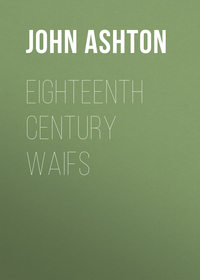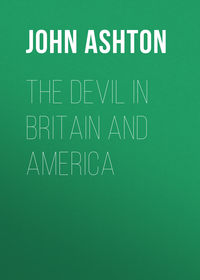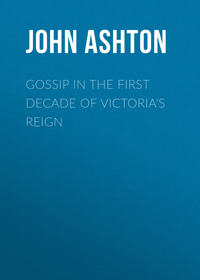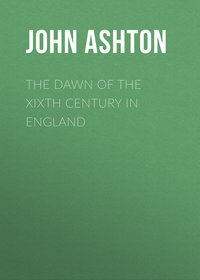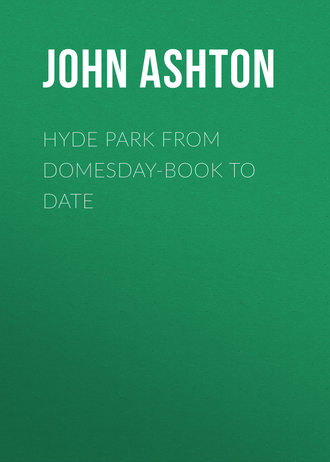
Hyde Park from Domesday-book to Date
“The House considered in the next place, that divers weake persons have crept into places beyond their abilities, and to the end that men of greater parts might be put into their rooms, they appointed the Lady Middlesex, Mistris Dunce, the Lady Foster, and the Lady Anne Waller, by reason of their great experience in Souldery in this Kingdome, to be a Committee of Tryers for the businesse.”
When London was fortified, in 1643, a large fort, with four bastions, was raised at Hyde Park Corner, where Hamilton Place now stands, and there it remained for four years, being pulled down in 1647. There was also at the north-east corner of the Park, where now stands the Marble Arch, a Guard House, to watch travellers on the Oxford Road, which was also defended by a large fort with four bulwarks, at the corner of Wardour Street. There was also in the neighbourhood of Hyde Park a small redoubt and battery on Constitution Hill; whilst another gives its name to Mount Street.
The guard at Cumberland Gate were especially watchful, for we read in A Perfect Diurnall of the Passages in Parliament, of 28th January, 1643: “There was also a Gentleman this day intercepted by the Courts of Guard of Hyde Parke, going to Oxford to the King, and being searched, there was divers letters found about him, which were brought to the Parliament and read, and found to be of very dangerous consequence, making a discovery of the state of things here, and the proceedings of the Lord Generall’s army.” And, also, in A Continuation of certain Speciall and Remarkable Passages from both Houses of Parliament, and other parts of the Kingdome, March 2-9, 1643. “Wednesday (8th March): a hat-full of Letters being intercepted by the Court of Guard at Hide Parke Corner, which came out of Wiltshire, (some of them being directed to persons disaffected to the Parliament,) they were brought to the House, and ordered that the Committee should take a view of them, that if any were of ill consequence, the same might be discovered, and the party found out.”
On August 6, 1647, Fairfax and the Parliamentary army marched, with laurel branches in their hats, through Hyde Park, where they were met by the Lord Mayor and Aldermen, to the City.
In December, 1648, there was a camp of the Parliamentarians in Hyde Park; and Cromwell there reviewed two regiments of horse, on 9th May, 1649, which is thus described in Perfect Occurrences of every Daie iournall in Parliament, etc., May 4-11, 1649: “The Lord Generall commanding a Randezvous this day (9th May) in Hide-parke, of his Regiment, and the Lieutenant-Generalls of Horse. The Lieutenant Generall made Speeches, declaring the Parliament’s great care and paines: 1. In execution of Justice against the grand Delinquents. 2. In their Declaration and Resolution to put an end to this and future Parliaments. 3. Their care for settling trade, by setting forth a gallant Navy at Sea. And 4. Their proceedings for payment of Souldiers Arreares. And as for Martiall law, those that thought it a burden, should have liberty to lay down their Armes, receive their Tickets, and bee payd as those that stay. There was one Trooper made some objections, and was bold, for which he was committed, but at the solicitations of some of his followers, the Lieut. – Gen. ordered his freedome, and to be received in againe. The Levelers colours were pulled out of three or four of their hats.”
This was the Parliamentary account – now let us see the other side, as expressed in Mercurius Pragmaticus (for King Charles II.), May 8-15, 1649, which is specially jocose on the Lord Protector’s red nose. “Newes at London this Wednesday Generall Tom (Fairfax) drew his Regiment and Cromwel’s to a Randevouz in Hide-Parke, where Lieutenant-Gen. Nose made a Speech to them, setting forth very eloquently the good Acts his brethren were now about to doe for the destruction of the Subject: the particulars of his Oration would be too tedious to relate. Fairfax sayd nothing, save nodded with the head, and made mouths at the Souldiers. There was one Trooper made some bold demands and objections against Rubinose, for which he was committed, whereupon there began to be some grudging, or shew of mutiny, which made Nol to pull in his Nose, and give Liberty to the Trooper againe; yet those who had Sea greene Colours received some affronts, having their fancies taken from them, to which they said little, whatever they thought.”
CHAPTER XII
Grand Reviews in 1660-1661-1668, 1682-1695-1699 – Camps in 1715-1716-1722 – Poem on the latter – Reviews in 1755-1759-1760.
A few weeks before the restoration of Charles II. Hyde Park was the scene of a very grand review, which is thus described in The Parliamentary Intelligencer, April 23-30, 1660. “On Tuesday, April 24, the Militia forces of the City Trained Bands and Auxiliaries, according to an Order of the council, marched into Hide-Park, the Maior in his Collar of S’s, with the Mace, Sword, Cap of Maintenance, the Aldermen in Scarlet, and the Commissioners of the Militia in handsome equipage going before them to a place erected for their entertainment. Each Colonel had his Tent and their Regiments very full, several of the Nobility and Gentry of great quality going as Volunteers. In Alderman Robinson’s Regiment were 250, the rest very many. The Regiments were all so numerous and so gallantly accoutred, as did sufficiently speak the strength and riches of the City, there being very little visible difference betwixt the Trained Bands and Auxiliaries, but only in their age.”
Strype, in his Continuation of Stow’s Survey, tells us that at this review there were six Regiments of Trained Bands, six of Auxiliaries, and one Regiment of Horse. The twelve Regiments of Foot consisted of 8 °Companies, and each Company consisted of not less than 250 men – which would give a total of 18,000 men; and the Regiment of Horse numbered 600.
On March 21, 1661, there was a parade in Hyde Park of 400 archers, and, on Sept. 27, 1662, Charles II. here reviewed his Life Guards. The 4th July, 1663, saw another muster of the King’s Guards, which Pepys, who was present, thus records: – “Thence with Creed to hire a coach to carry us to Hyde Parke to-day, there being a general muster of the King’s Guards, horse and foot; but they demand so high, that I, spying Mr. Cutler, the merchant, did take notice of him, and he, going into his coach, and telling me that he was going to the muster, I asked, and went along with him; where a goodly sight to see so many fine horses and officers, and the King, Duke and others came a-horse-back, and the two Queens in the Queene-Mother’s coach, My Lady Castlemaine not being there. After a long time being there, I light, and walk to the place where the King, Duke, etc. did stand to see the horse and foot march by, and discharge their guns, to show a French Marquisse (for whom this muster was caused,) the goodness of our firemen, which, indeed, was very good, though not without a slip now and then; and one broadside close to our coach we had going out of the Park, even to the nearnesse as to be ready to burn our hairs. Yet, methought, all these gay men are not the Soldiers that must do the King’s business, it being such as these that lost the old King all he had, and were beat by the most ordinary fellows that could be.”
We have seen how, in the year of the Great Plague, the Guards were encamped in Hyde Park, and how miserably some of them died there: and it does not seem to have been again used for military display till Sept. 16, 1668, which Pepys saw. “When I come to St. James’s I find the Duke of York gone with the King to see the muster of the Guards in Hyde Park; and their Colonel, the Duke of Monmouth to take his command this day, of the King’s Life Guard, by surrender of my Lord Gerard. So I took a hackney coach, and saw it all; and, indeed, it was mighty noble, and their firing mighty fine, and the Duke of Monmouth in mighty rich clothes; but the well ordering of the men I understand not.” Evelyn, also, speaks of these reviews.
On Jan. 28, 1682, the Guards were again reviewed in Hyde Park, this time for the gratification, and in honour of the Ambassadors of the Sultan of Morocco, whose followers afterwards performed a fantasia, after the manner of their country. Queen Mary reviewed troops in the Park on the 9th and 10th of May, 1692, and there was a very grand parade of troops previous to their departure for Flanders on Dec. 23, 1695. The London Post, Nov. 8-10, 1699, says that on Nov. 9 “The King reviewed the 3 Troops of Guards in Hide-Park. They appeared all in their new Cloaths, and fine accoutrements, with Feathers in their Hats, and made an extraordinary show. His Majesty rid through every Rank, and was very well pleased to see them in so good an Appearance; after which, he placed himself on the left of the Front, till the whole marched by him in File; then they took their ground again, and afterwards were ordered to pass Man by Man before his Majesty; and a detachment was made out of all the 3 Troops, for His Majesty’s Guards, who attended His Majesty to Kensington. There was an incredible Crowd in the Park to see the Show, some computing that there could not be less than 10,000 People, and 60 °Coaches.”
In 1715, King George I. being newly set upon the throne, there were Jacobite riots in many parts of England, and, in July of that year, a camp was formed in Hyde Park, for the protection of London, of a very strong body of troops, together with twelve pieces of artillery. The camp occupied the site of the Exhibition of 1851, and, according to the St. James’s Evening Post, July 23-26, 1715, “The three Battalions of Foot Guards on 23rd July marched to their Encampment in Hyde Park, and the Horse and Grenadier Guards took their Post there next day, and the Regiment of the Duke of Argyle is expected there this day.” The same paper says that “This Day His Royal Highness the Prince of Wales went to view the Camp in Hyde Park.” In the copy for July 30-Aug. 2 we read that on the anniversary of the King’s accession, Aug. 1, “There were likewise Rejoycings in the Camp at Hyde Park, where the King’s and other loyal healths were drank by the Officer and Soldiers, and a Discharge was made of their Artillery and Small-Arms. The first Regiment of Guards received their new cloathing, and made a very fine appearance.” The King, on Aug. 8th, “went to Kensington, view’d the Camp on his way, and return’d at Night to St. James’s.” The Flying Post, or The Postmaster, Nov. 1-3, 1715, gives an account of the celebration of the birthday of the Prince of Wales (Oct. 30) in the camp. It says: “It was solemnized with extraordinary Demonstrations of Joy, the Army being wonderfully pleas’d with his Royal Highness, because he inherits the Military, as well as the other Virtues of his Royal Father and other Great Ancestors. His Grace the Duke of Montague signaliz’d his Bounty on that Occasion, by giving an Ox to his Troop, which was roasted whole at the head of the Standard. His Grace gave them, likewise, 50 lbs. weight of Pudding, a Hogshead of Wine, and 2 of Strong Beer, with which they drank the Healths of His Majesty, their Highnesses the Prince and Princess, and of their Royal Issue, with those of the Dukes of Marlborough and Montague, and other loyal Healths. They had, also, Illuminations in Circles, throughout the Camp, and there were incredible Numbers of People, who came to see those Novelties, without committing any Disorder.”
Another newspaper, the St. James’s Evening Post, Nov. 1-3, 1715, supplements this account thus: “After the triple Salvo of the Artillery and Small Arms that was made in the Evening, Col. Oughton, one of the Grooms of His Royal Highness’s Bed Chamber, and Major of the first Regiment of Guards, invited all the Foot Officers to an Entertainment in his Tent; and, that the Soldiers might Share in the Universal Joy on this Occasion, distributed a Guinea per Company among the private Men, to drink the Prince’s Health, etc., which they did with repeated Huzzahs and Acclamations of Joy, under great illuminated Circles erected for that purpose at the head of every Company.” The same paper, of Dec. 10-13, tells us that on Dec. 10, “the Army decamped from Hyde Park, and the Artillery, etc., were sent back to the Tower.”
There was another camp in the Park next year, when the Prince of Wales reviewed the troops, and yet another in 1722, of which The Daily Post of May 9 records: “Yesterday, all the Foot Guards that were not upon duty, march’d to the Camp mark’d out in Hide Park; his Majesty and Royal Highness view’d them from the Terrass Walk in the Privy Garden at St. James’s as they passed by.” Every newspaper of the day had an account of the Royal Review of the troops in camp on June 11, 1722, but the best was in The Flying Post, June 12-14. “The Forces which were review’d by the King last Monday in Hyde Park, were only the three Regiments of Foot Guards, the Horse being to be review’d another time. His Majesty having rode round the three Regiments, the first of which was on the Right, the Second on the Left (the Posts of Honour), and the Scots Regiment in the center; his Majesty made a stand, afterwards, near the Ring, the Prince at some small distance from him, where all the Regiments passed by in review, Earl Cadogan standing on his Right, and General Withers on his Left, with each his half-pike.
“His Majesty and his Royal Highness, after having dined in one of the Earl of Cadogan’s tents, went into another, which Prince Eugene took from the Prime Vizier of the Turks, who presented it to the Duke of Marlborough, who afterwards made a present of it to my Lord Cadogan. There was an appearance of about sixty Dukes and other Peers, besides abundance of other persons of distinction, particularly the Bishop of Durham, who was finely mounted, in a lay habit of purple,43 with jack-boots, and hat cock’d, and black wig ty’d behind him, like a militant officer. But, above all, the eyes of the numerous spectators were on his Majesty, whom they admired for that graceful, easy mien with which he sat on horseback and returned the salutes of the officers, and for the wonderful agility with which he dismounted.”
This camp was so famous, that there was a long poem published about it,44 of which I extract some short portions, as it brings the place, its times and manners, very vividly before us.
“Before the Camp, the Cannon find a Place,(Ready to stare the Enemy in the Face,)Mounted, Charg’d, Prim’d, and all things Toujours Prêt,To give the daring Rebels an Arrêt.Where watchfull Centinells stand (full of Ire,)With Match or Halberts, ready to give Fire.The Warning-Piece, too, stands not far before,Whose harsh Report is watch’d by many a Score,Not only of Drums and Trumpets, for Tattou,But of the Mobb, who come to see this Show:And gaping, stand in Crowds on either side,And, in the Firing it, take a mighty Pride.Behind, are plac’d the Powder-Carriages,The Cannon’s necessary Equipages;T’ th’ Right is Pitch’d the Master-Gunner’s Tent,Set out with Match, for Use, or Ornament.Facing the Front, are set the Quarter Guard,To give th’ Alarm, in case they shou’d be scar’d.Whose constant Watch, for some strange Enterprize}Does (tho’ the Rest are all at play) suffice,}And takes away all fear of a Surprise.}The Right and the Left wings, are form’d by th’ Horse,And in the centre, stand the Foot, of course.The Field-Colours, each Squadron’s Ground mark out,The Gay Bell-tents are plac’d before the Foot;In Gaudy Line, they’re ranged along the Plain,To keep their Arms from Rust, by Dew or Rain.At either regiments Head of Horse are rear’d,Their several Standards, with their careful Guard:Betwixt the Horse, are stretched the Picket Ropes,Where the Horses stand, to fill their Hungry Chops;Some of which sure, find Provender but scanty,They look so near akin to Rosinante.I’ th’ Rear, (and that, indeed’s, the fittest for ’em,)Are plac’d the Officers, in nice Decorum.…Their airy Tents are sprucely Neat and Clean,And all is there disposed with a Bonne Mine,Each strives to shew his Genius to be Brilliant,In the Composure of his gay Pavillion.The spacious Avenue that leads to th’ Door,Is with red Gravel (rolled) all cover’d o’er;A Grassy Turf each Walk emborders round,And greatly beautifies the golden Ground;In various Forms their Fancies are exprest,One Walk, on either side, with Flowers is drest:Another entrench’d, some strew’d with Cockle-Shells,(And each think, doubtless, that his own excels.)While others, who’re, perhaps, more negligent,Have nought but rugged Earth before their Tent.The noble H – ’s Pavilion’s in the Centre,A Guard is at the Door, that none should enterBut whom he bids, and lest it be expos’d,With platted Boughs ’tis all round enclosed:So thick they stand, so loftily they rise,Secure he’s kept from view of Vulgar Eyes.“The Tops o’ th’ Tents and Borders differ too,Some are adorn’d with Red, and some with Blue;This, has its flaming Swords, and that, its Arms,And each the Eye with various Figures charms.But leave we this, my Muse, and let’s begin,To shew what Furniture’s contain’d within.(Lest they take Cold) Some boarded are all o’er, }Others have only Two, that lead to th’ Door, }But most have painted Cloths45 upon the Floor. }Facing the Entrance is set up the Bed,Of what’s lik’d best, of Green, or Blue, or Red:Some, too, are lac’d, some wrought, others are plain,And, from the Bed, there is a kind of Train,Of the same sort, stretch’d out on either side, }Which Masters’ and the Valets’ Rooms divide, }And does the necessary Lumber hide. }…The Table and the Chairs are some o’ th’ rest,Set to accommodate th’ expected Guest;Near the Bed, hangs (in a convenient Place,) }That necessary Utensil, the Looking Glass, }Where Mr. Smart may see his Monkey Face. }But, hold, let not the Tea-Table be forgot,O’er which they hold many a luscious Chat,With Generous She’s; and make a Prose Lampoon,(By way of Dialogue) upon half the Town.An useful Copper Kitchin stands just by, }From whence whene’er the Tea-pot’s almost dry, }Of Boiling Water they’ve a fresh Supply.” }In 1755, the King several times reviewed his Light Horse Cavalry in Hyde Park. Read’s Weekly Journal tells us how on 17th July, 1759, “the regiment of Norfolk Militia march’d to Kensington, where His Majesty stood under the Piazza in front of the Palace, and saw them file off in ranks of eight deep; the Earl of Orford, Colonel, march’d at the head of the first battalion, with drums beating and fifes playing; the second battalion had Sir Armine Woodhouse, Bart., Lieut. – Col., at their head, and were look’d on as a fine corps. His Majesty seem’d greatly pleas’d with their appearance. Their uniform is scarlet turn’d up with black. They march’d on Kingston, and other towns contiguous, on their way to Portsmouth.” Walpole, in his letters (19th July, 1759), says, “The crowds in Hyde Park, when the King reviewed them, were unimaginable.”
On 20th November, 1760, George II. held his last review in Hyde Park, for he died suddenly on the 26th. The following account of it is given in Read’s Weekly Journal, of 25th November. “Exactly at a quarter before ten, at the review of Colonel Burgoyne’s regiment of Light Horse, in Hyde Park, his Majesty entered the grand pavillion or tent, erected under the garden wall, where were likewise present their Royal Highnesses the Prince and Princess of Wales, the Duke of York, Princess Augusta, and some other of the young princes and princesses; Lord Viscount Ligonier, Lord Anson, and a great number of other noblemen, etc. As soon as his Majesty entered the pavillion, the whole regiment, before they began their exercise, passed before him, four in a rank; after which they all dismounted, and drew up before the tent. His Majesty expressed the greatest satisfaction at seeing their manner of exercising, and retired at half-past ten; there were near 20,000 spectators present. As soon as the review was over, some pieces of a new construction, and of a globular form, were set on fire, which occasioned such a smoke, as to render all persons within a considerable distance invisible, and thereby, the better enabled, in time of action, to secure a retreat.”
CHAPTER XIII
Reviews in 1763-1764 – Shooting-butts in 1778 – Camp in 1780 – Severe Sentence of a Court-martial – Volunteer reviews, 1799-1800 – The rain at the latter.
It would be wearisome to chronicle every review, except grand ones such as the following, which is thus described in the St. James’s Chronicle, June 25-28, 1763. “On the morning of the 27th inst. at half-past eight, his Majesty, the Duke of York, and Prince William Henry, attended by Earl Delawar, and escorted by the first troop of Horse Guards, mounted their horses at the Queen’s Palace,46 and proceeded up Constitution Hill to Hyde Park. They were received at their entry into St. James’s Park by Lord Ligonier, the Marquis of Granby, Earl Talbot and Earl Harcourt, with their attendants and their led horses. At the gate of the Green Park they were received by Lord Orford, Ranger of the Parks, on Horseback; and, on their entry into Hyde Park, his Majesty received a Royal Salute from the Artillery. The manner of the three Regiments of Foot Guards going through their new method of exercise, need not be repeated; it is sufficient to observe that never men went through their discipline with greater exactness, which reflected the highest honour on their Officers, and filled the numerous spectators with admiration.
Besides the illustrious personages above mentioned, his Majesty’s two younger Brothers, and a great number of the First Persons of Distinction of both Sexes, and near One Hundred Thousand other People, were present. It is remarkable that Elliot’s Light Horse, the Matrosses,47 who managed the artillery with such inimitable skill, and those of the Guards, who served abroad in Germany, wore in their Caps and Hats Sprigs of Laurel and Oak, emblematical of the Immortality and never-dying Fame of their late glorious Achievements.”
On July 25 following, the King again reviewed Elliot’s Light Horse in the Park, and the same newspaper (July 23-26) records the following accidents. “Colonel Elliot, in putting up his sword into the Scabbard, by the prancing of his Horse wounded himself in the Thigh, but not so dangerously but that he went through the whole Exercise of his Regiment, with great Composure and Exactness. A large arm of a Tree broke down, by which accident a Sergeant in the Guards had his Skull fractured, and several others were terribly bruised.”
George III. held many reviews in Hyde Park, especially during the early days of the American War of Independence, and the Park was a veritable Champ de Mars for military exercises. In 1778, an earthen rampart, twenty feet high and three feet wide at its base, was erected as butts for musket practice. It began at Cumberland Gate, and ran westwards towards Bayswater. Being near the high road, it was very dangerous, although at that time the other side of the road was all fields.
On June 2nd, 1780, broke out the fanatical riots generally known as the “Lord George Gordon Riots,” with which we have nothing to do, other than to chronicle the fact that the troops in and near London being considered insufficient to cope with the rioters, others were summoned from different parts of the country. Lodging must be found for these on their arrival, and we read in The London Chronicle, June 6-8, 1780, that “Orders are given from the War Office for a Camp to be formed in Hyde Park, and the several regiments that are to compose the same are now on their march; and, yesterday, the Hampshire Militia pitched their tents there for that purpose.” Also, later on in the same paper (p. 552), “Seven battalions of militia marched into Hyde-Park yesterday afternoon, where they immediately encamped. A large detachment of the Hampshire militia are doing duty at the President Lord Bathurst’s house in Piccadilly. The Park Gates are all shut, and no person suffered to pass through on any account whatever.”
The Morning Chronicle of June 10 says: “Thursday (June 8), six regiments of Militia were encamped in Hyde Park; they are to be joined by several other regiments, which will make their number 10,000 men”: and the same journal, June 13, tells us that, “The Grand Camp in Hyde Park consists of the nine following regiments: the Queen’s, the Royal Irish, the Twenty-second, Cambridge, South Hants, North Hants, Oxford, Northumberland, One of York.” On the 14th June, the King, Prince of Wales, and “the Bishop of Osnaburgh” (Duke of York) visited the Camp – and so he did on several other occasions. But the riots came to an end, and the news of the taking of Charlestown drove everything else out of people’s heads, so that we do not hear much more of this Camp; but Paul Sandby painted a series of views of the Camp, and exhibited them at the next Royal Academy. He also engraved them. “The Great Encampment in Hyde Park.” “The Encampment in Hyde Park—The Filbert Merchant.” “Ditto —Marshall Sax’s Tent.” “Ditto —The Soldier’s Toilet” (which is here reproduced), and several others. In “The Soldier’s Toilet” we get rather more than a peep into the domestic life of the Camp, and in the background we see St. George’s Row, and the chapel attached to the burial ground in the Bayswater Road, now rebuilt. After the scare was over, and martial law in London was abolished, the Camp was much visited; but when it had fulfilled its needs it had to come to an end, and on the 10th of August the Camp broke up, after having earned golden opinions from the Londoners.




